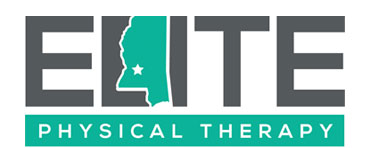Adhesive Capsulitis (Frozen Shoulder)
What is Adhesive Capsulitis (Frozen Shoulder)?
Adhesive capsulitis, commonly referred to as a frozen shoulder, occurs when the joint capsule and soft tissues surrounding the shoulder become inflamed, swollen and contracted. This causes bands of scar tissue to restrict joint mobility, which then leads to pain, stiffness, a limited range and gradual loss of overall motion in the shoulder joint. This loss of motion ultimately leads to loss of function for the entire upper extremity, especially with reaching and overhead activities.
Common Causes of Adhesive Capsulitis
Although no definitive cause has been identified, there are a number of risk factors predisposing a person to developing adhesive capsulitis. Factors may include shoulder trauma, surgery, diabetes, inflammatory conditions (such as rotator cuff tear, bursitis, or tendonitis) and inactivity of the shoulder. Autoimmune disease and some thyroid conditions also appear to be linked to adhesive capsulitis.
Common Symptoms of Adhesive Capsulitis
- Pain
- Decreased range of motion in your shoulder
- Stiffness
- Decreased function – including daily living activities such as dressing, bathing, driving etc.
How We Treat Adhesive Capsulitis
- Stretching and manual therapy techniques – including joint mobilization
- Range of motion exercises
- Patient education for posture and arm positioning
- Strengthening exercises
- Ultrasound therapy, cold compression, heat therapy and other modalities for pain, as well as to improve tissue flexibility
- Activities to regain functional use of the shoulder
*Services are not available at all locations. Call or click the location page near you for that center’s services.
What to Expect
Every patient has a unique health history, diagnosis and personal goals. When you come for your first appointment, we will create a personalized treatment plan for you.
We work with most major insurance providers and do our best to help keep the paperwork pain-free. If you’d like to confirm your insurance coverage, please let us know and we can verify when you schedule. If your insurance provider requires a co-pay, we will ask for this payment at each visit. We accept payments by cash, check or credit card.
When to Arrive
On average, a patient’s first visit lasts about an hour. We typically ask patients to arrive 15 minutes early to sign-in, complete paperwork and/or change clothes.
What to Bring
On your first visit, you’ll need to bring your physician referral or prescription (if needed), your insurance card, your primary registration forms, your ID or driver’s license and your co-payment (as applicable). If desired, you may bring a change of clothing.
How it Works
During your first visit, your physical therapist will do an initial evaluation and discuss your plan of care. The therapist uses this information to set goals for your continued treatment. Physical therapy goals may include improved movement, strength, endurance and flexibility, as well as decreased pain. Your subsequent visits will focus on treatment that is based on your diagnosis and individualized goals.
